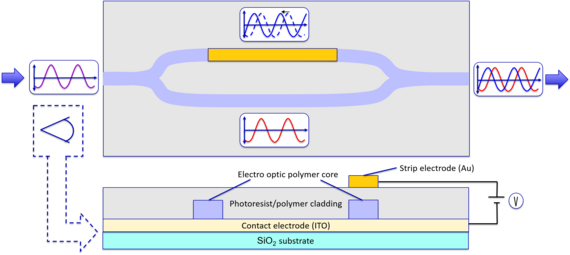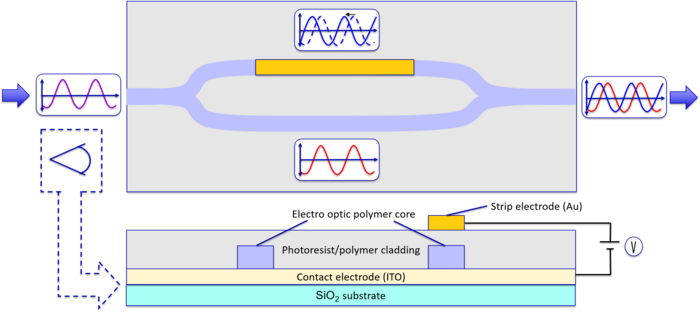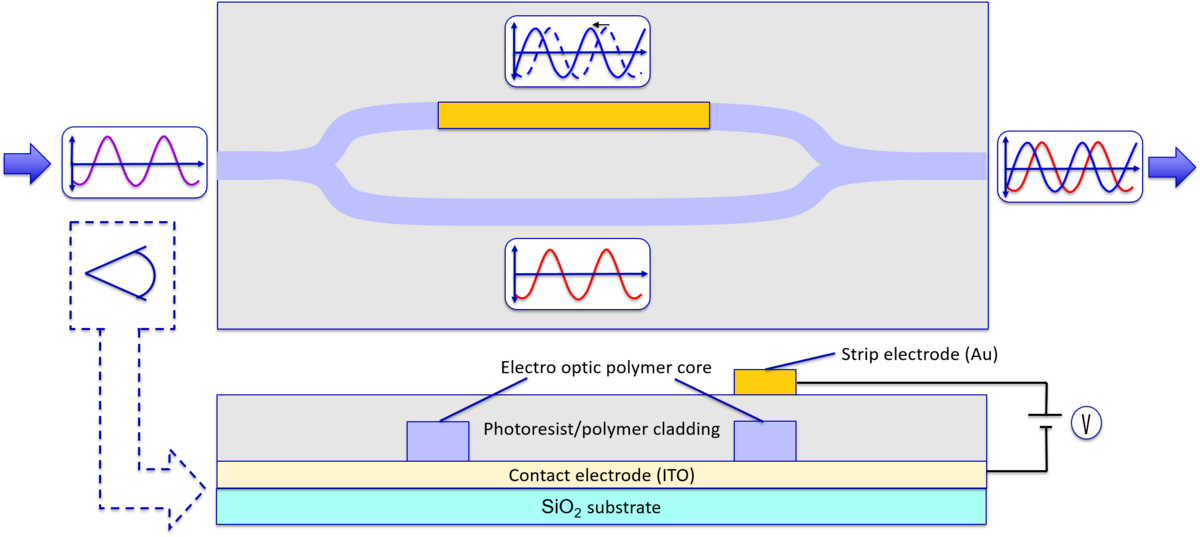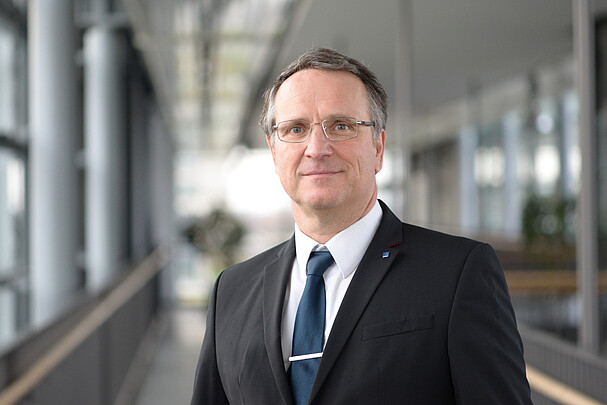Other important goals of our task group are as follows: The material is tailored for integration into planar optical waveguides. Optical properties and processabilityare selected accordingly. This will enable a component of a system-on-a-chip if required. In addition, there is an overlap with Task Group S2 for the computer-chemical modelling of chromophores as part of the molecule design. Furthermore, close cooperation with M6 is planned, in which the manufactured materials are used in test structures and material parameters are measured, which provide information about the applicability as optical components and give constant feedback for the material synthesis.
Our Motivation
Worldwide data transport has increased more than tenfold in the past ten years. Technological advances in processor performance and storage capacities require increasing transmission speeds and amounts of data. The use of electrical bus interfaces is a bottleneck in modern computers, especially in smaller devices. The use of optical components would enable significantly higher speeds. A connection between electrical and optical signals, an electro-optical modulator, is required at this point. In these modulators, an electrical field is translated into a change in the light velocity inside the material, which can be converted by the use of certain optical structures into a high frequency on/off signal.
Lithium niobate is currently used as an established material for such EO modulators. Although it is very well suited for many high-performance applications, there are critical drawbacks for widespread applications. For operation in the GHz range, voltages of over 100 V are necessary, complicating the use of lithium niobate EO‑Modulators in commercially available computers. Poled organic electro-optical polymers would enable high switching speeds at low voltages. As amorphous plastic materials, they also offer new processability opportunities compared to crystalline lithium niobate. Currently, a material system has to be found which, with good performance, also enables long term stability and durability. To solve this problem, we are working on the modelling and synthesis of novel polymers.
Our Research
The work within the task group is divided into different material systems. The Johannes/Kowalsky (IHF) and Menzel (ITC) research groups are developing organic electro-optical materials. These possess the property of converting electrical signals into optical signals via the Pockels effect. Organic donor-acceptor chromophores act as the optically active unit. An external electric field temporarily induces an intramolecular charge transfer. The different electron distribution results in a change in the permittivity and thus the refractive index in the material. Since the effect is strongly dependent on symmetry, the chromophores must be aligned when they are integrated into a component and fixed in a matrix. For this purpose, chromophores are incorporated into organic polymers using various architectures (Fig. below). Chromophores with high activity and temperature stability as well as suitable anchor groups are designed and synthesized at the IHF. At the ITC amorphous polymers are prepared which have high glass transition temperatures, good transmission properties, and are suited to incorporate the chromophores.
There is an ongoing cooperation with other chemists in the cluster. An exchange with computational experts in Task Group S2 is necessary for planning and molecular design. New material variations are to be produced, which then are applied in-house (IHF) within the Task Group M6 on optical test structures. In the long term and after proof of concept, further cooperation for integration into optical chips and for material measurements are envisaged.


Contact
 © IW
© IW
30823 Garbsen
 © IW
© IW
30823 Garbsen











